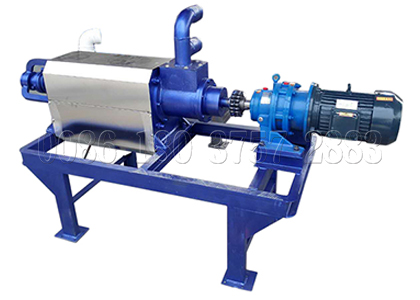Para lidar com resíduos orgânicos com alto teor de umidade, o primeiro passo é remover o excesso de água. Este tipo de lixo orgânico inclui esterco de vaca, esterco de porco e alguns resíduos agrícolas. Por extrusão de parafuso, pode realizar a desidratação de resíduos orgânicos. Tongda produz dois tipos de separadores de esterco, separador sólido-líquido e tela inclinada para separação sólido-líquido. De acordo com a nossa experiência, Resumimos as seguintes perguntas. E esperamos que eles sejam úteis para você.

1. Qual é a capacidade do separador de estrume?
The input of organic waste: 8-15 metros cúbicos por hora.
A produção de resíduos orgânicos desidratados: 1.5-3 metros cúbicos por hora.
2. What’s the materials of the whole machine?
All parts that contact with organic waste adopt SUS 304 ( such as hopper screen and auger).
3. Is it adopts explosion-proof motor ?
Yes.
4. Is the pressure (dehydrating level) increased by hand with tools or is it electric ?
You need to adjust the pressure of manure separator by hand with tools.
5. What’s the moisture of organic waste after dehydrating?
De um modo geral, it ranges from 25% para 40%. But you can adjust it according to your actual requirements.
6. What’s the hp of electric motor and the available voltage(110 V/220 V)?
The motor power is 4 Kw. The voltage can be designed and adjusted according your requirements.
7. What’s the size of liquid outlet hole?
Its diameter is 76 mm.
8. What’s the size of screen mesh?
Its size is 0.3-0.5 mm. And the customized size can achieve 0.1-0.3 mm.
9. Where can I use separated liquid from animal manure?
You can make bio-gas from it.
10. How to deal with organic waste after dewatering?
You can make a compost pile and produce organic waste compost, which can be used as organic fertilizer. Então, you can make bagged fertilizer powder or pellets for commercial purpose.
Note: Durante a compostagem, the content of animal manure is at least 60%.


